Also known as: Cromeleque do Monte das Fontainhas Velhas
Standing above the flat sandy soil, the stones aim for the sky, pointing the way to heaven. Walking among them, feeling their smooth shapes and measuring their arrangement, one can only ponder their construction and purpose. Was this a temple? An astronomical marker? A social gathering place? We’ll likely never know. For now, it is a place to admire the work of ancient people and ponder the 6,000 years between them and us.
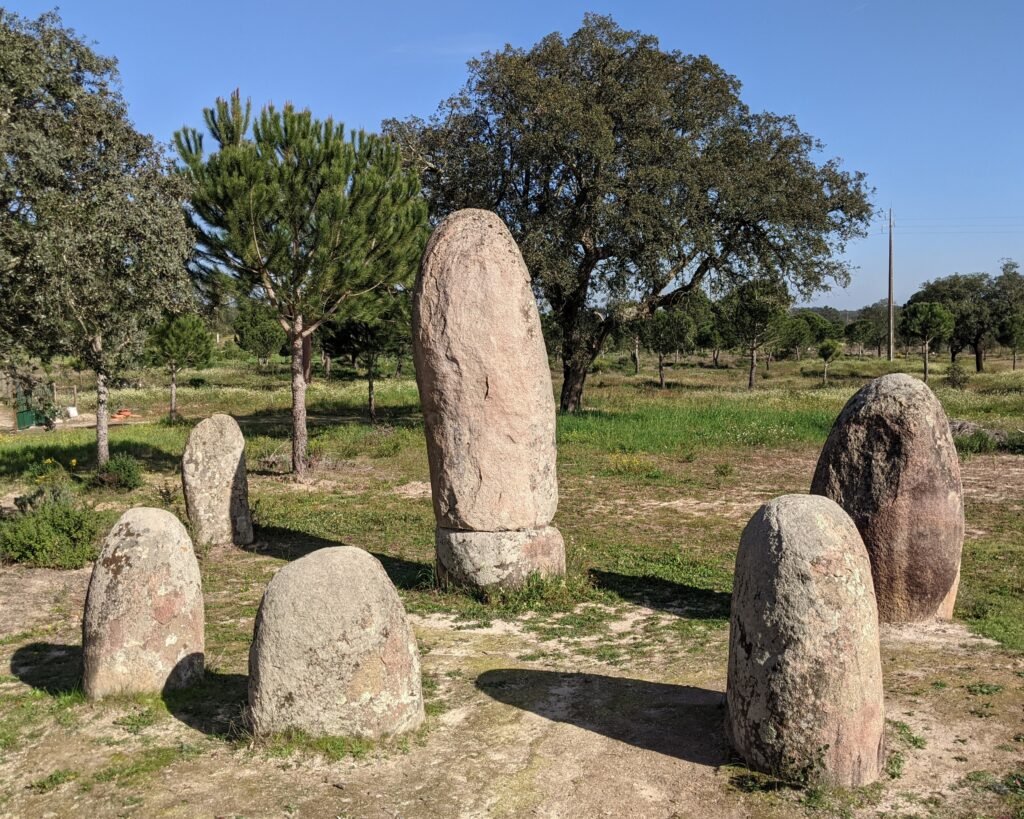
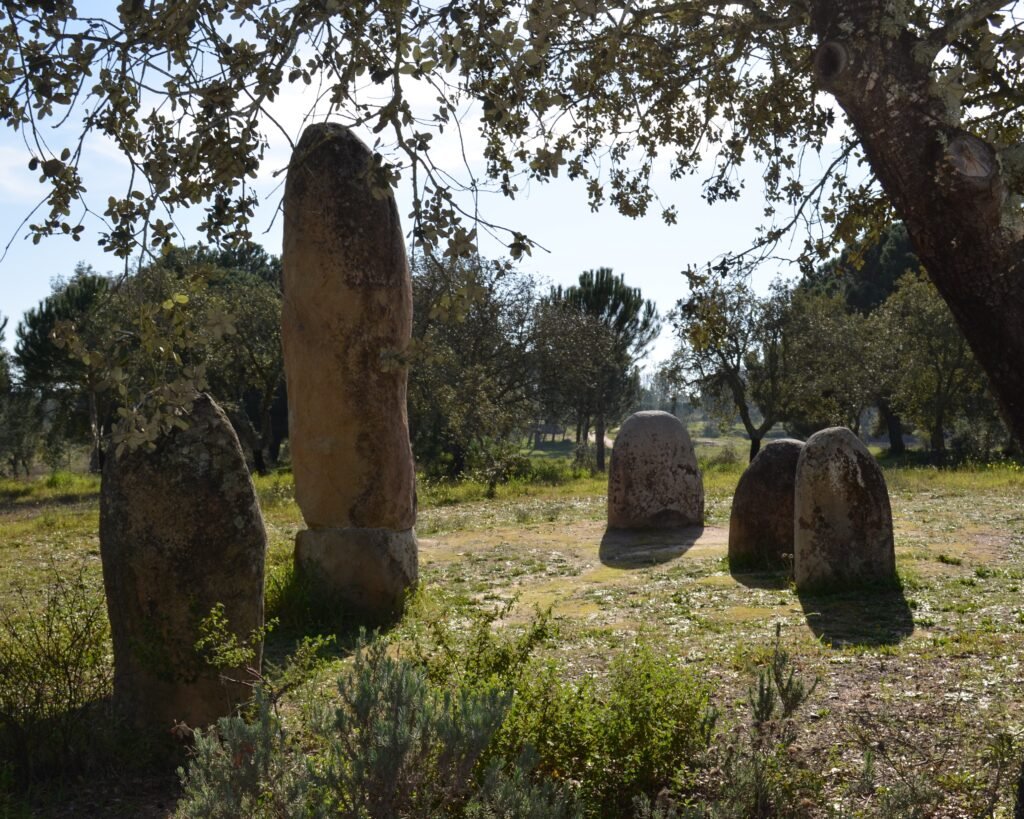
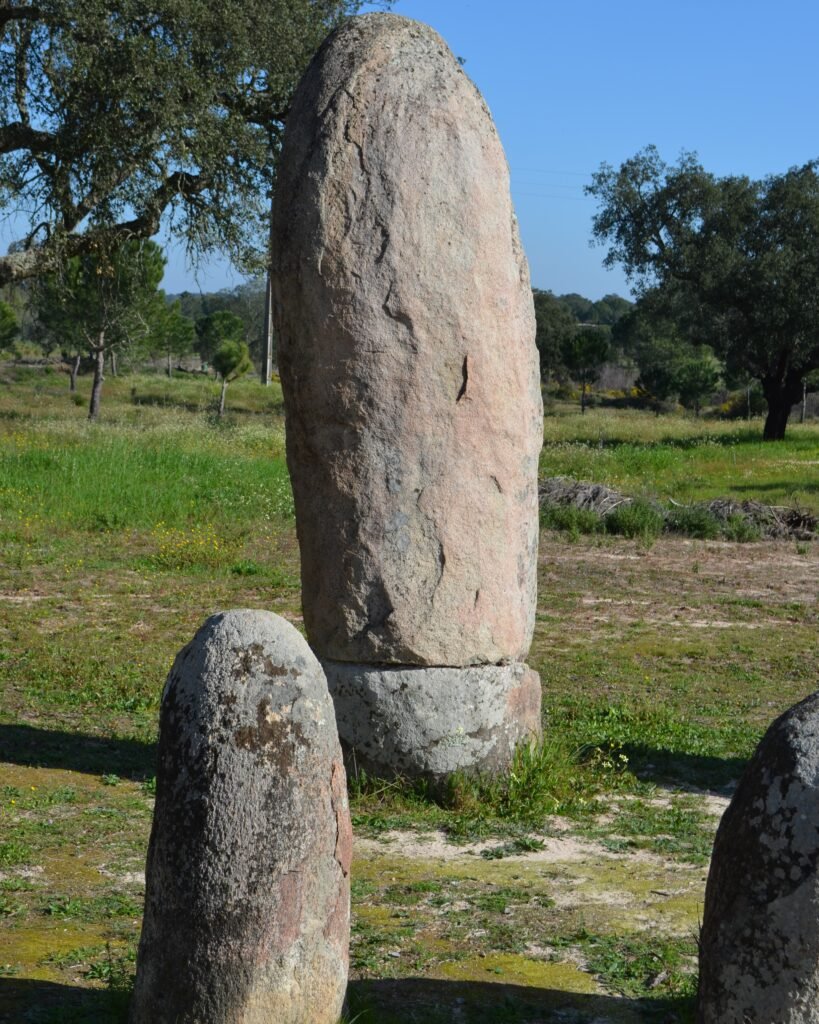
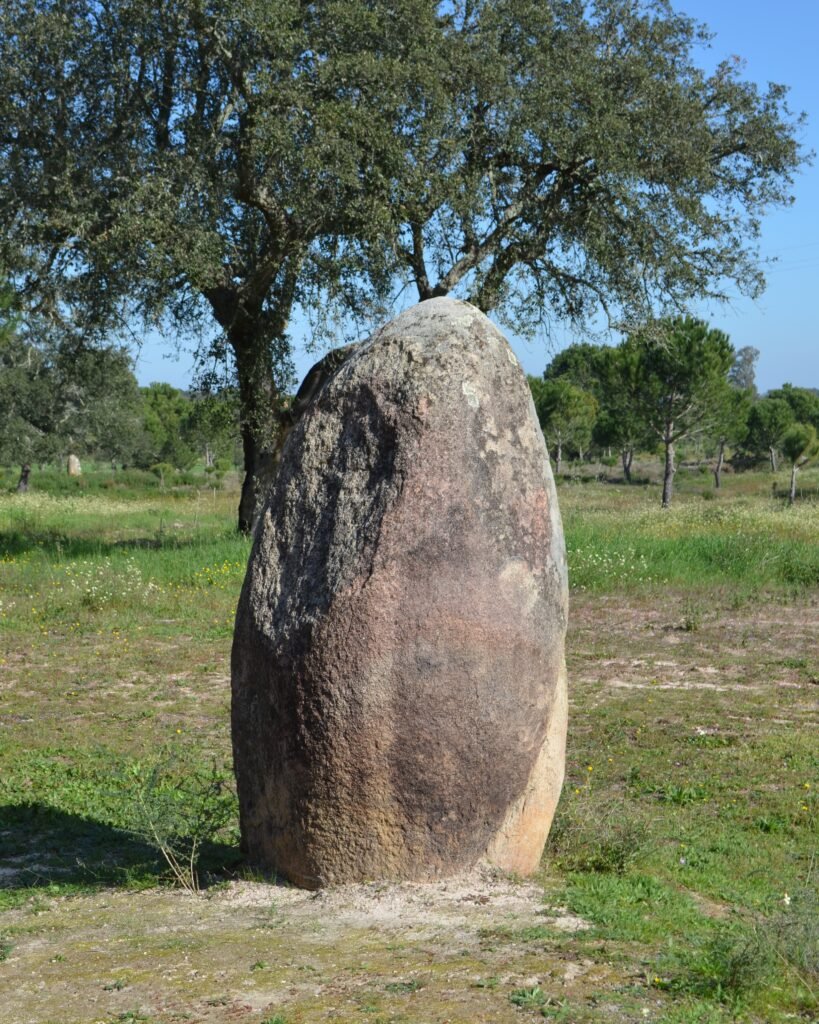
This cromeleque (or stone circle) presently has 6 existing stones, in a horseshoe shape. There were at least two more, and it’s presumed that the original structure was circular. The stones have been re-raised into their original positions. The fractured central menir has been repaired. The stones are generally undecorated, although there are possible engravings on one stone, faintly seen and only conjectured1.
The city council of Mora has erected a sign with a brief description, in Portuguese and English:
Built between the beginning of the 4th millennium and the middle of the 3rd millennium BC, this megalithic monument must be part of the so-called ‘Évora megalithic universe’. This cromlech is located on a hillside overlooking Ribeira da Raia. Only six monoliths of coarse granite spread across an area of about 16 m2 have remained until the present time. Apparently, they were part of a supporting structure of a circular complex. No engravings or ‘indentations’ were found on the surface of these monoliths. The vestiges of this chromlech were identified by Mário Varela Gomes in 1985, however the monument was already known before that date.
Camara Municipal de Mora
The cromeleque was identified by the Leisner archaeologists in the 1950’s but wasn’t really surveyed or properly identified until the 1970’s. (The Leisners were apparently focused on the funerary megaliths of the regions, as the Almendres monuments had yet to be discovered and draw attention to the menirs and cromeleques of the region.) Proper excavation was carried out in 2005 led by Manuel Calado and Leonor Rocha, producing various artefacts and information.
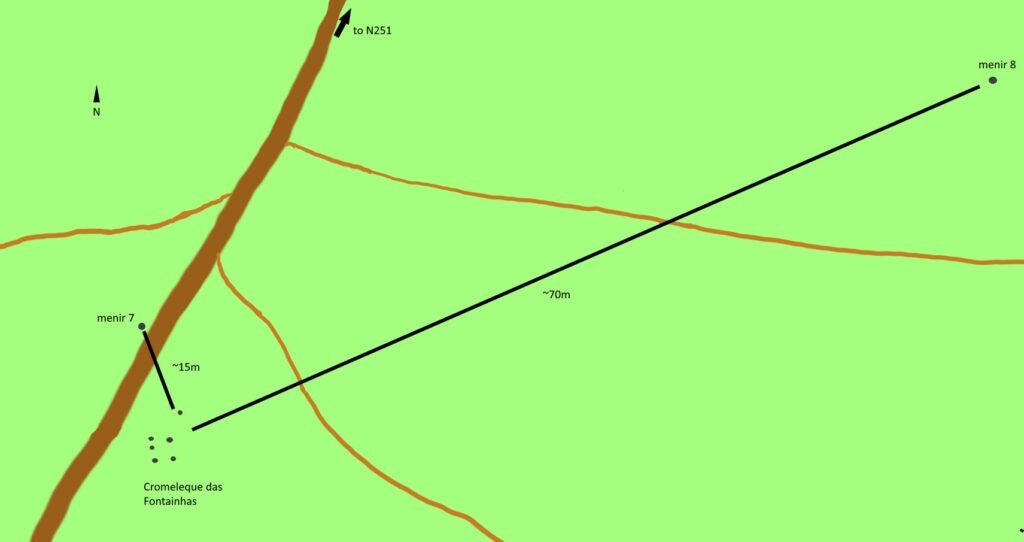
In the immediate vicinity of the cromeleque, there are two independent but obviously related menirs. (Their proximity to the cromeleque is notable, but having related menirs is fairly common among the cromeleques of the Alentejo.) Menir 7 is quite near (around 15 meters), across the main dirt road. (There is an information signpost next to it.) Menir 8 is further away (around 70 meters) to the northwest. Excavations of the two menirs indicate that they were originally placed in these locations. The two are in an astronomical alignment related to both solar (solstice) and lunar (moonrise at the standstill) events.
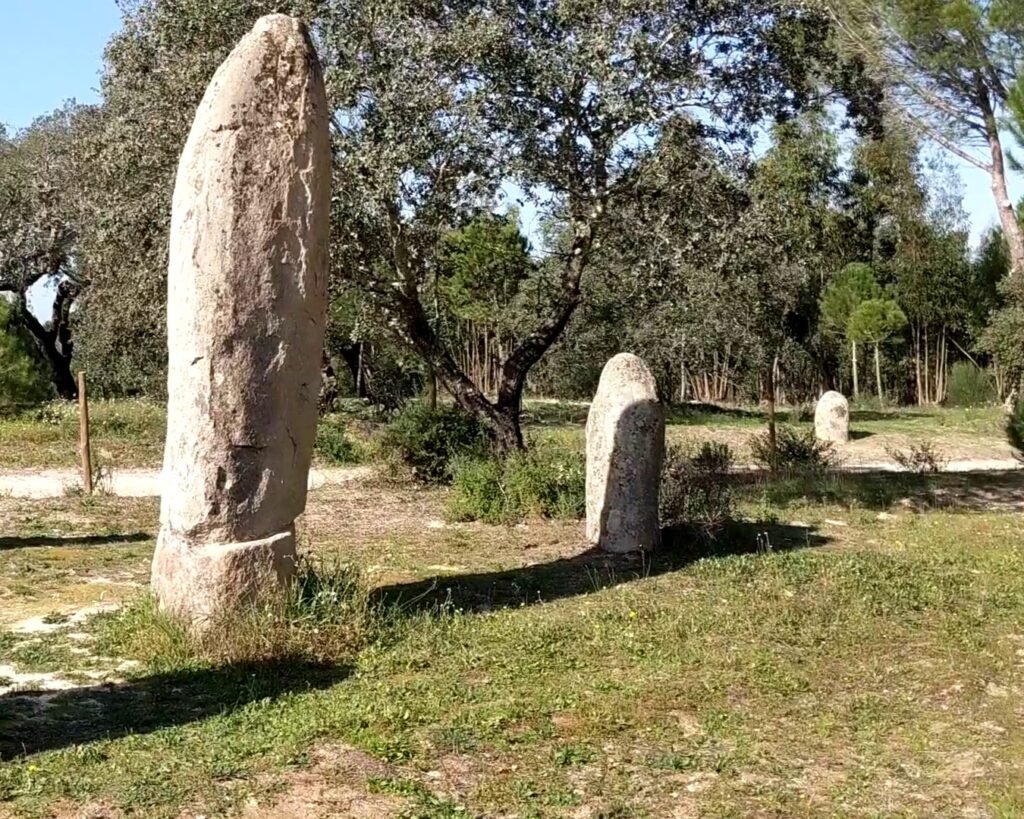
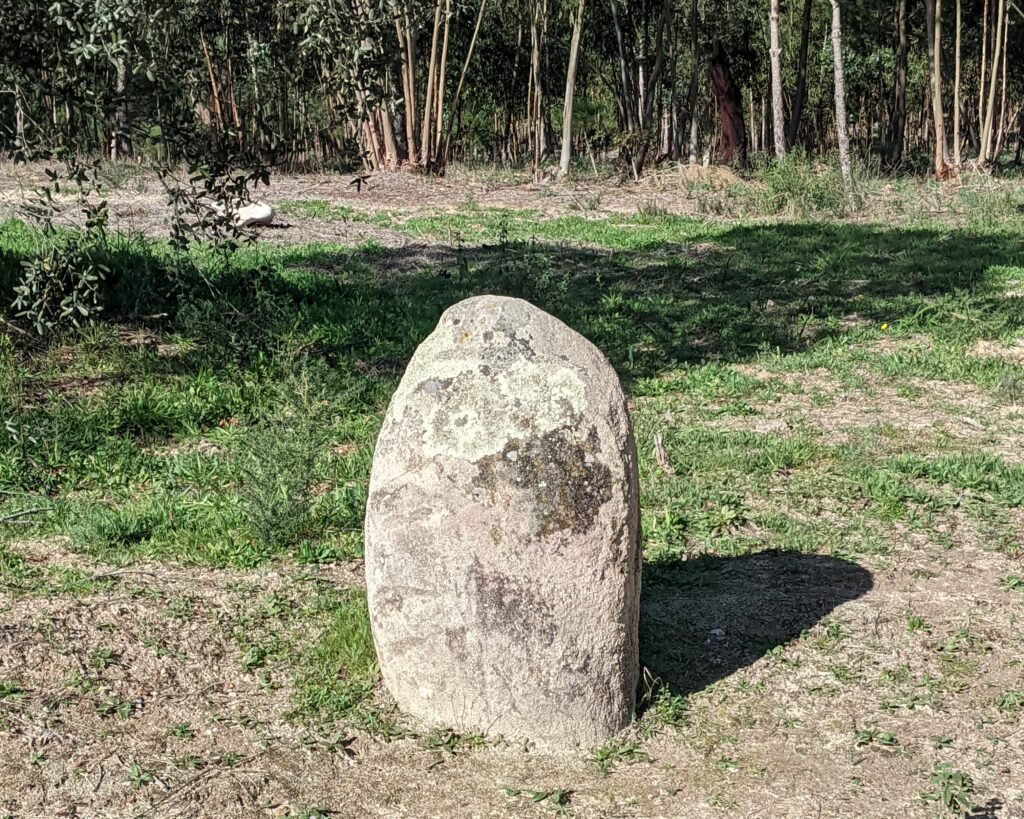
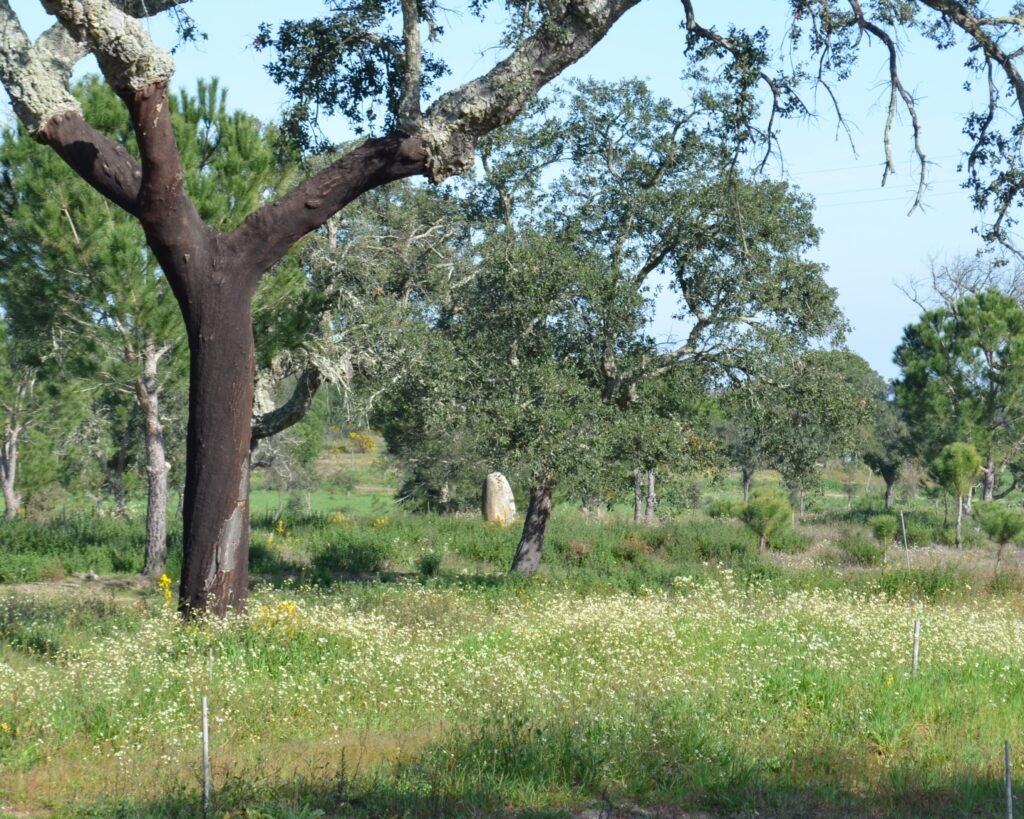
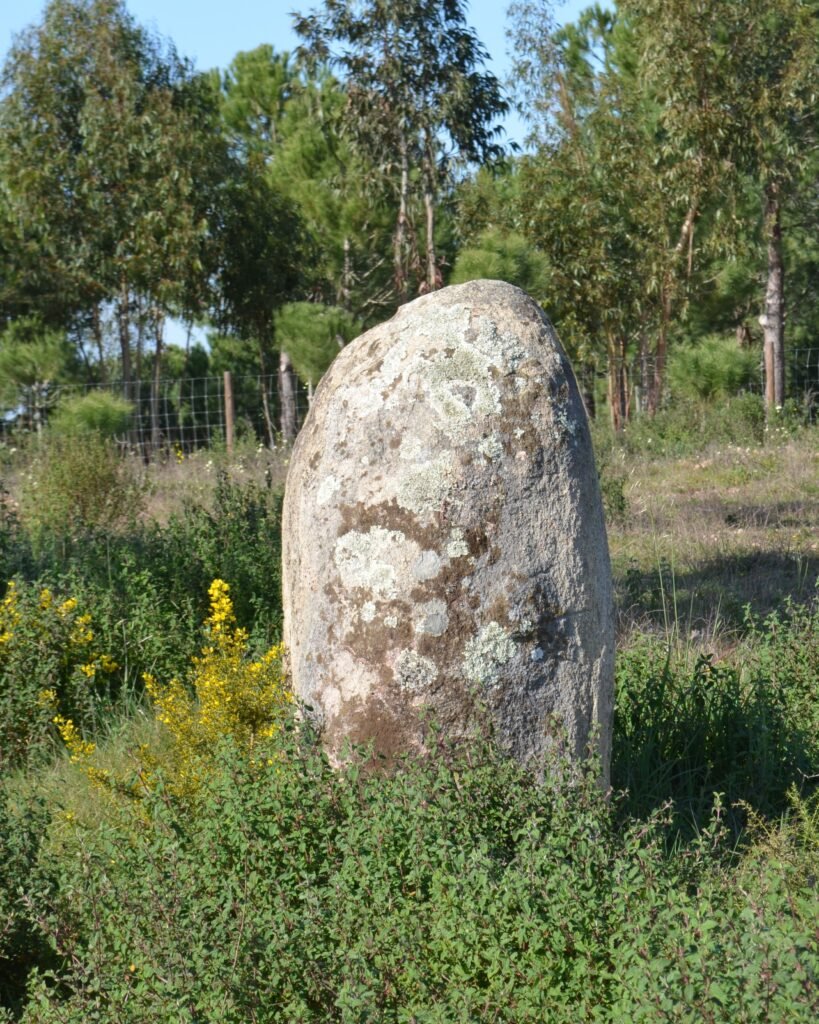
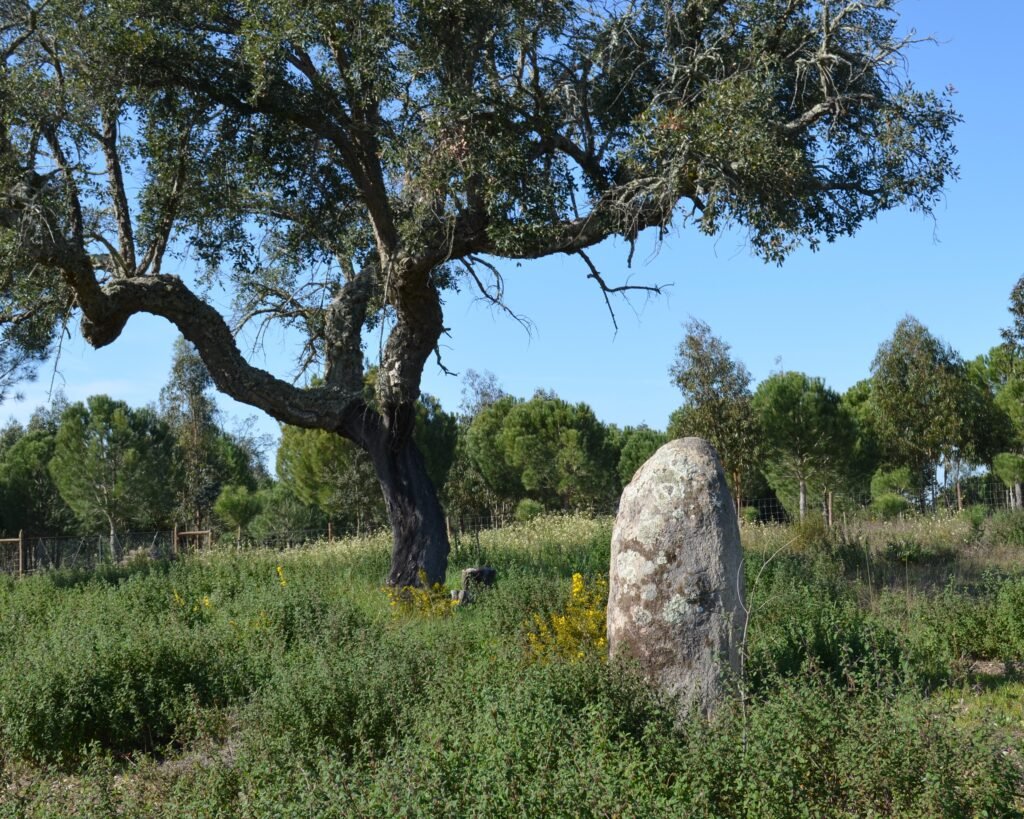
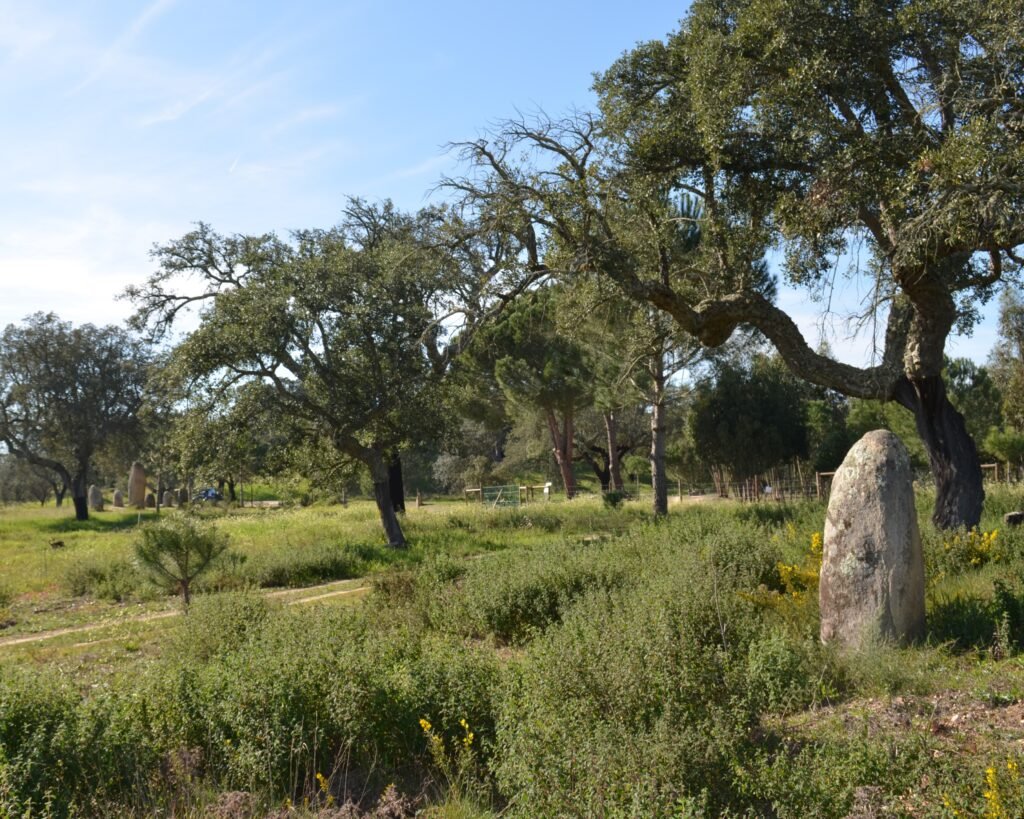
Location
In the Alentejo region, Évora district, municipality of Mora, parish of Pavia. It’s about 4km from the town of Mora, along the N251 towards Pavia. The cromeleque is about 200m from the main road.
Access
From the tarmac road (N251), it’s a short drive along a flat dirt road (about 200m). The cromeleque is just beside the dirt road. The terrain is all flat.
Signage
There is a sign along the N251 as you drive east out of the town of Mora, heading towards Pavia/Estremoz. (There’s no sign facing drivers coming from Mora towards Pavia!)
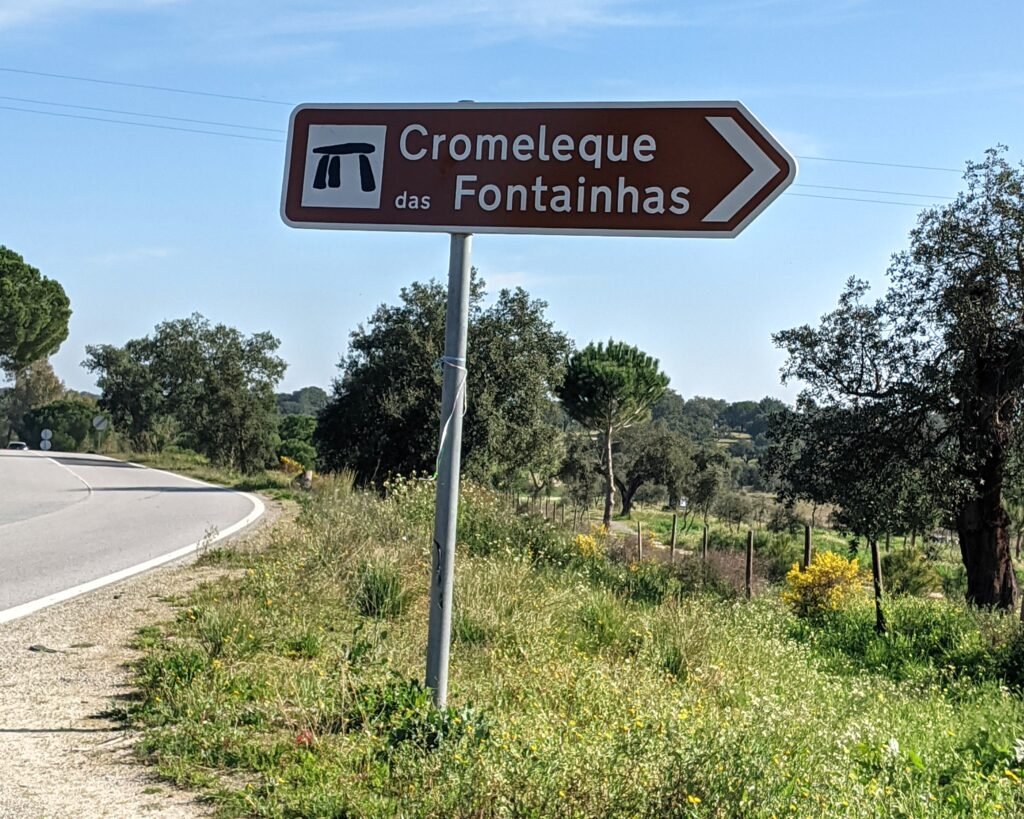
Links
- Entry (in English) on the Megalithic Portal
- Entry (in English) of the furthest outlying menir
- Description (in Portuguese and English) from the Municipality of Mora’s Travel App
- A video (no language) by Andarilho.pt
- A video (no language) by the town of Mora
- Description (in Portuguese) from the Interactive Megalithic Museum of Mora
- Description (in Portuguese) from Archaeologists’ Portal of Directorate-General of Cultural Heritage
- Designation (in Portuguese) as “Property of Public Interest” by the Director-General of Cultural Heritage
Nearby
The town of Mora is very close, where there’s the Interactive Megalithic Museum. There are loads of sites in the area! In Pavia, there’s the Anta-Capela (dolmen/chapel) of São Dinis, plus the Antas of Lapeira. More megaliths are found all around the region!
- CALADO, Manuel, ROCHA, Leonor e ALVIM, Pedro (2007) – Neolitização e Megalitismo: o recinto megalítico das Fontainhas (Mora, Alentejo Central). In Revista Portuguesa de Arqueologia.
↩︎
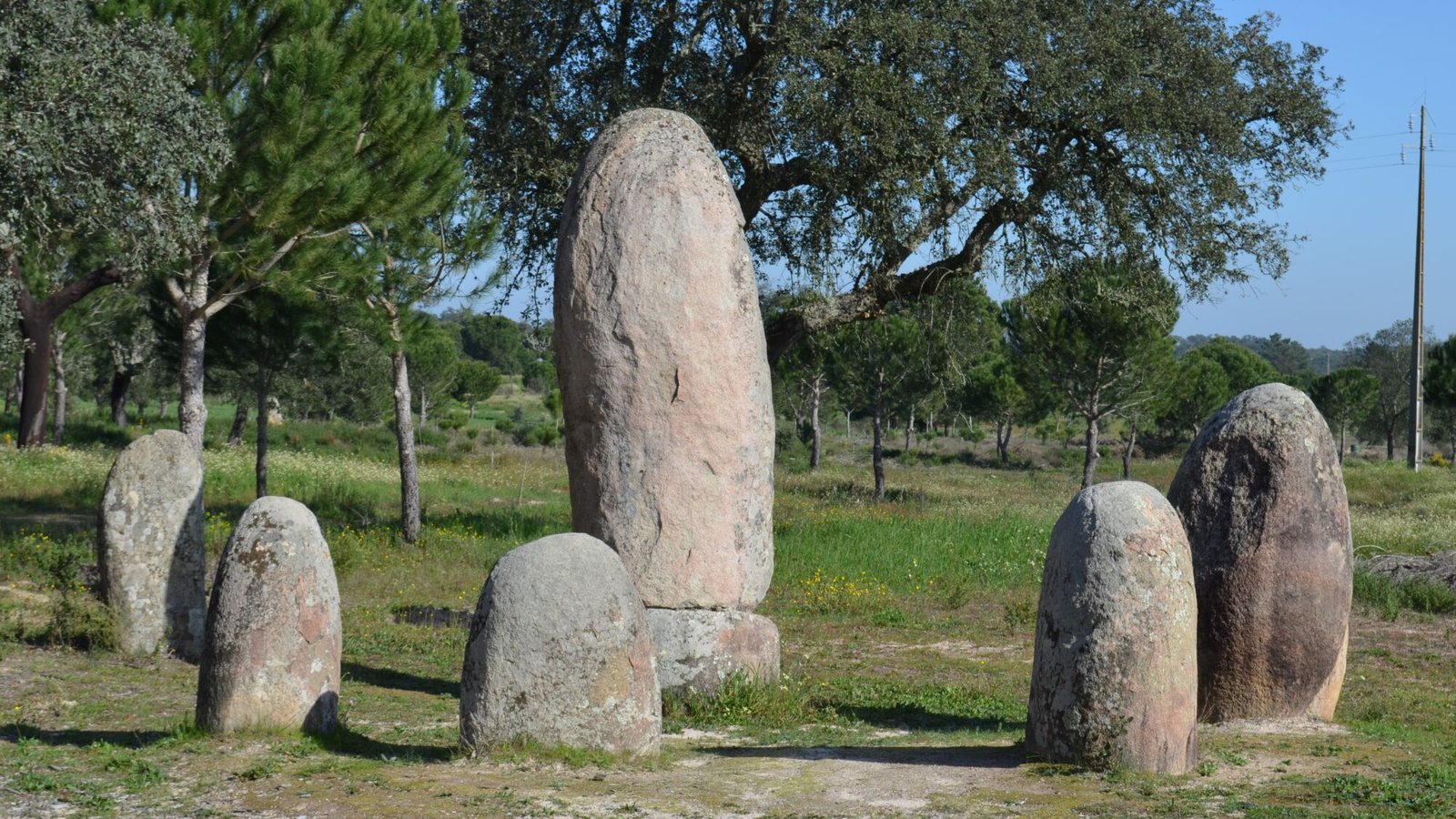
Pingback:Interactive Megalithic Museum - Prehistoric Portugal